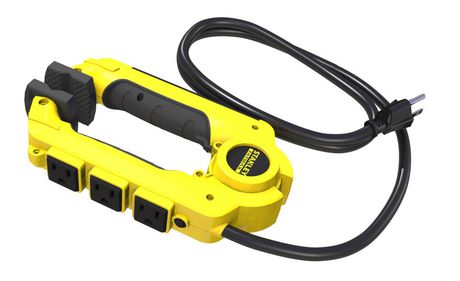J clamps, also known as bar clamps or clasp clamps, are versatile and essential tools in any woodworker’s arsenal. These clamps offer superior clamping power and flexibility, making them indispensable for a wide range of projects. In this comprehensive guide, we’ll explore the art of maximizing the clamping power of J clamps, ensuring precise and secure workpiece positioning for optimal results.
Understanding J Clamps: Design and Functionality
Before diving into the techniques, let’s first understand the design and functionality of J clamps. These clamps consist of two main components:
- Clamping Arm: The longer, curved arm that applies pressure to the workpiece.
- Threaded Shaft: The adjustable shaft that allows you to control the clamping force.
The curved design of the clamping arm provides a wider surface area for even distribution of pressure, minimizing the risk of workpiece damage. Additionally, the threaded shaft enables precise adjustments for varying clamping requirements.
Choosing the Right J Clamp Size
J clamps come in various sizes, each suitable for different applications. Here are some general guidelines for selecting the appropriate size:
- Small Clamps (6-12 inches): Ideal for delicate projects, such as woodworking, cabinetry, and small assemblies.
- Medium Clamps (12-24 inches): Versatile for a wide range of projects, including furniture assembly, gluing, and clamping larger workpieces.
- Large Clamps (24-48 inches): Recommended for heavy-duty applications, such as clamping large panels, beams, or outdoor projects.
It’s always better to have a variety of J clamp sizes in your workshop to accommodate different project requirements.
Maximizing Clamping Power: Tips and Techniques
Proper Positioning and Alignment
Proper positioning and alignment of J clamps are crucial for maximizing their clamping power and ensuring a secure hold. Follow these tips:
- Distribute Clamps Evenly: Space the clamps evenly along the workpiece to distribute the clamping force uniformly.
- Align Clamps Perpendicular: Position the clamps perpendicular to the workpiece for optimal clamping force.
- Use Caul Boards: Caul boards or auxiliary pieces of wood can help distribute the clamping pressure evenly across the workpiece, preventing dents or deformations.
Clamping Sequences and Patterns
Employing the right clamping sequences and patterns can significantly enhance the clamping power and ensure uniform pressure distribution. Here are some effective techniques:
- Alternating Clamping Pattern: Tighten the clamps in an alternating pattern, working from the center outwards. This technique helps evenly distribute the clamping force and prevents workpiece warping or twisting.
- Progressive Tightening: Start with a moderate clamping force on all clamps, then progressively tighten them in a specific order (e.g., from the center outwards or from one end to the other).
- Opposing Clamps: For larger workpieces or assemblies, use opposing clamps on opposite sides to counteract the clamping forces and maintain alignment.
Accessorizing for Enhanced Performance
J clamps can be further optimized for various applications by utilizing additional accessories:
- Clamping Pads: These soft pads protect the workpiece from clamp marks and provide better grip, preventing slippage.
- Corner Clamps: Corner clamps allow you to clamp workpieces securely at 90-degree angles, ensuring a tight fit.
- Clamp Extensions: Extensions increase the reach and versatility of J clamps, allowing you to clamp larger workpieces or access hard-to-reach areas.
Maintenance and Care
Proper maintenance and care of J clamps are essential for ensuring their longevity and consistent performance:
- Clean and Lubricate: Regularly clean the threaded shaft and moving parts, and apply a thin layer of lubricant to prevent rust and ensure smooth operation.
- Inspect for Damage: Check for any cracks, bends, or deformities in the clamping arm or shaft, and replace damaged clamps immediately.
- Organize and Store Properly: Store J clamps in a dry, organized manner to prevent damage and ensure easy access when needed.
Applications of J Clamps
J clamps are versatile tools with a wide range of applications in various industries, including:
- Woodworking: Clamping workpieces for gluing, assembly, and finishing projects.
- Metalworking: Securing metal components during welding, fabrication, or shaping processes.
- Construction: Holding materials in place during framing, concrete forming, or other construction tasks.
- Automotive Repair: Clamping body panels, engine components, or other automotive parts during repair or restoration.
- DIY Projects: Ideal for home improvement projects, such as clamping boards, pipes, or various materials during assembly or repair.
With their adjustable clamping force and versatility, J clamps are indispensable tools for professionals and DIY enthusiasts alike.
Additional Tips and Considerations
- Safety First: Always wear protective gear, such as safety glasses and gloves, when working with J clamps to prevent injuries.
- Clamping Force Control: Apply only the necessary clamping force to avoid damaging the workpiece or the clamp itself. Overtightening can lead to deformation or breakage.
- Parallel Clamping: When clamping parallel surfaces, use a clamping bar or caul to distribute the pressure evenly and prevent bowing or warping.
- Specialty Clamps: For specific applications, consider investing in specialty clamps like mitre clamps, corner clamps, or deep-throat clamps for improved performance.
- Clamping Surface Preparation: Ensure that the clamping surfaces are clean and free from debris or obstructions to achieve maximum clamping power and prevent slippage.
- Combine with Other Clamping Methods: J clamps can be used in conjunction with other clamping methods, such as spring clamps or strap clamps, for added security and versatility.
- Experiment and Adapt: Don’t be afraid to experiment with different clamping techniques and setups to find the most effective solutions for your specific projects.
Conclusion
Maximizing the clamping power of J clamps requires a combination of proper positioning, clamping sequences, accessorizing, and regular maintenance. By following the tips and techniques outlined in this comprehensive guide, you’ll be able to achieve precise and secure clamping, ensuring optimal results for your various projects. Invest in high-quality J clamps, experiment with different techniques, and enjoy the versatility and clamping power these essential tools offer.



